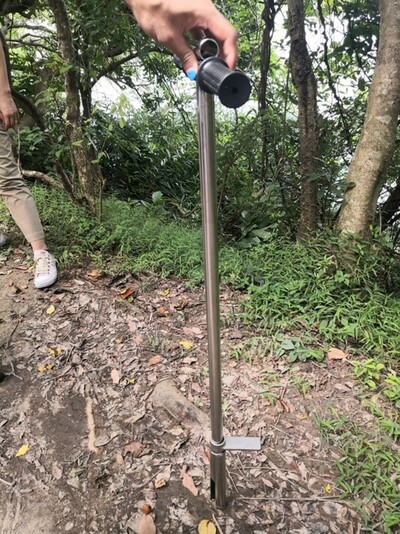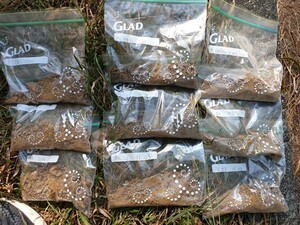Heavy Metal Pollution in Hong Kong Country Parks
Dr Edith Ngai, Faculty of Science and Technology
Country parks play an important role in nature protection, recreation, and outdoor education. During weekends and holidays, thousands of Hong Kong residents and tourists flock to country parks for camping and hiking. Hong Kong is a densely populated city. Most country parks in Hong Kong are adjacent to busy roads, meaning that the soil may be polluted with heavy metals emitted from the traffic activities nearby. This can pose potential health risks to the park users especially children when visiting the parks, as well as ecological risks to the environment (i.e., biological, chemical or physical stress which can have an adverse response in the environment).
There are twenty-four designated country parks in Hong Kong. Dr Edith Ngai from the Department of Construction Technology and Engineering studied four country parks, namely Plover Cove Country Park, Sai Kung West Country Park, Lion Rock Country Park, and Kam Shan Country Park. These selected parks are near busy roads, and people who engage in recreational activities are most vulnerable to the effects of pollution, so it is necessary to study the potential health impact of soil pollution on these sites.
Between the wet (Apr to Oct) and dry (Nov to Mar) seasons from 2019 and 2021, 48 topsoil samples were collected from the four country parks. At each location, a stainless-steel soil sample probe was used to collect 0-10 cm of topsoil samples.

The use of a soil sample probe to collect soil samples
The samples were sent to a HOKLAS-accredited laboratory for analysis. Inductively Coupled Plasma Mass Spectrometry (ICP-MS) and/or Inductively Coupled Plasma Atomic Emission (ICP-AES) were used to detect the presence of heavy metals such as arsenic, silver, cadmium, chromium, copper, mercury, nickel, lead, and zinc in the sample. Several indices, for example, the Pollution Load Index (PLI), Average Pollution Index (PIave), Nemerow Pollution Index (PINemerow) were used to assess the level of pollution of the soil samples. The indices can be compared to assess the overall soil quality of different sites.

Soil Samples
The results showed that the surface of roadside soils was polluted with traffic-induced heavy metals, and the concentration increased with traffic volume. Kam Shan Country Park was found to have the highest concentration of chromium, copper, lead and zinc (roughly 7.8 times higher than the average of the other three parks studied), and the PIave and PINemerow indices showed that the level of soil pollution in Kam Shan Country Park was the highest (Table 1). In terms of soil conditions, the pollution load index (PLI) indicated that the soil conditions in all the parks, except Plover Cove, deteriorated over time, as a result of high traffic volume.
| PLI | PIave | PI(Nemerow) | RI | |
| Plover Cove Country Park | 0.99 | 1.08 | 1.81 | 70.78 |
| Sai Kung West Country Park | 2.84 | 1.22 | 1.47 | 67.35 |
| Lion Rock Country Park | 4.11 | 1.34 | 1.96 | 98.84 |
| Kam Shan Country Park | 813 | 3.95 | 8.60 | 192.08 |
Table 1. Summary of the integrated indices calculated for four country parks
in Hong Kong
Overall, the results suggest that the ecological risks in all the parks were acceptable, ranging from low to moderate. Dr Ngai outlines that developing better urban planning can avoid high ecological risks, and to reduce heavy metal pollution in country parks, increasing the height of roadside green plants is a solution.
From this study, it is clear that traffic-induced pollution is present on the soil surface of Hong Kong’s country parks. At present, there are no regulatory guidelines and benchmarks for assessing metal pollution in the soils in Hong Kong. Existing guidelines in the industry only focus on the impact of heavy metal pollution from industrial facilities without acknowledging pollution from traffic activities. With many high-polluting industries gradually leaving Hong Kong, vehicular emissions will become the main source of environmental pollution. More research is needed to address the problem of traffic-induced pollution, including research on emission control measures in areas with busy traffic activities to reduce traffic-induced heavy metal pollution.
(Acknowledgement: This project was supported by the THEi Seed Grant Scheme, Project No.: SG1819106.)
